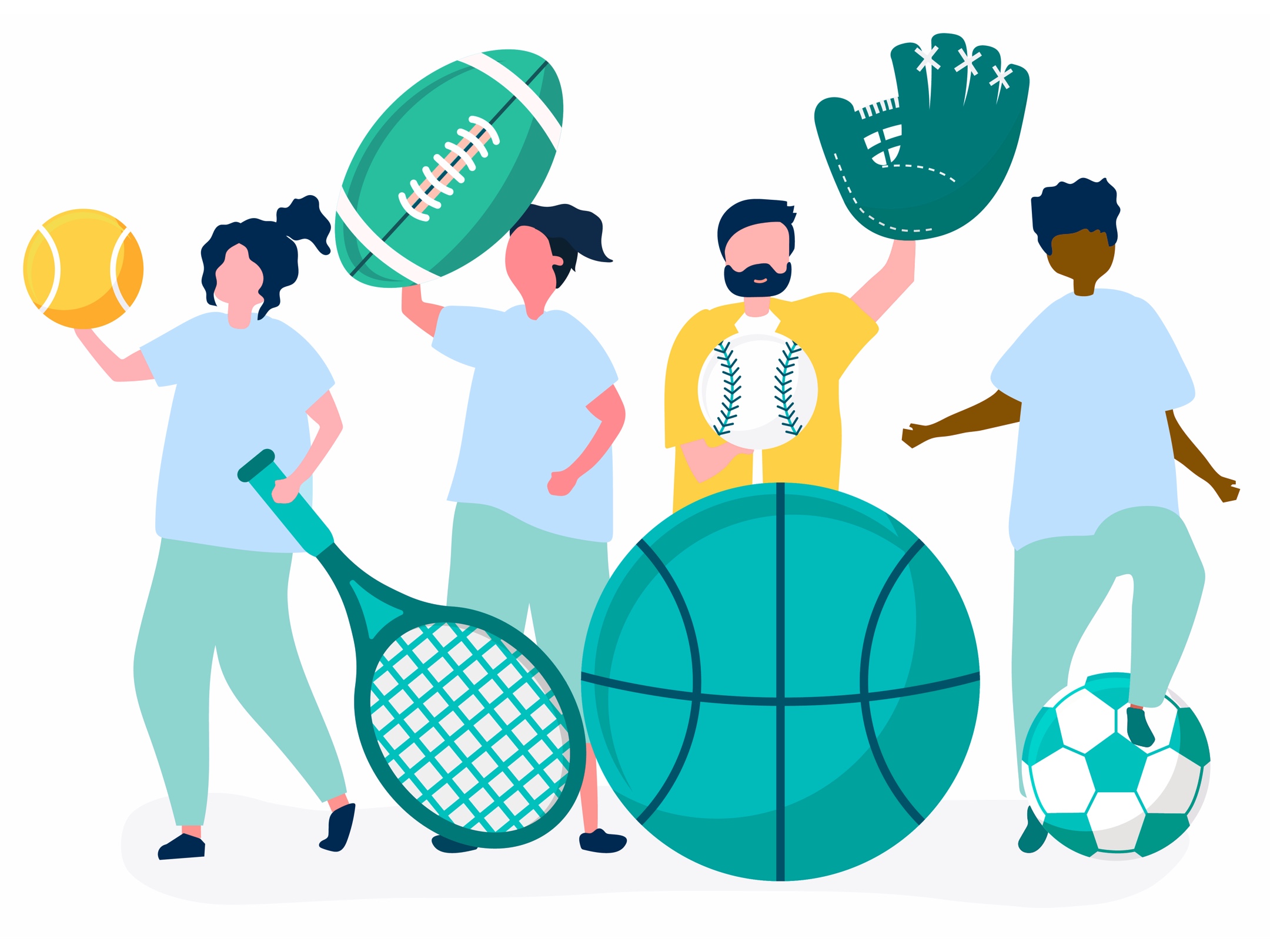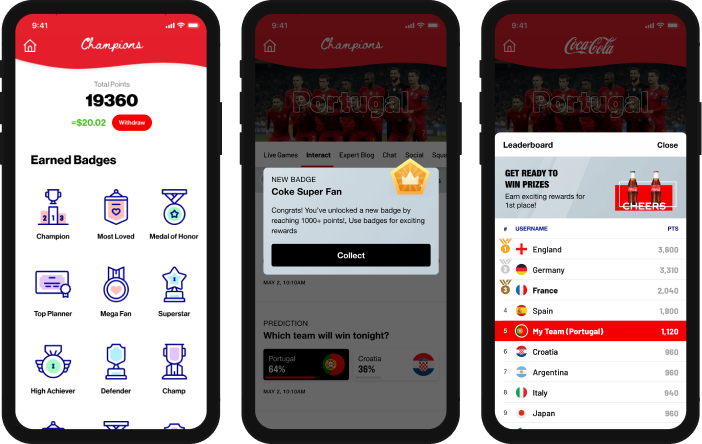The Psychology of Fan Engagement: Understanding the Role of Gamification in Sports Media

In the world of sports media, fan engagement is paramount. Fans are the backbone of the industry and keeping them engaged and invested in your product or service is more than essential. But sports fandom is about more than just watching games and cheering for your favorite teams. For many, it’s a deep-seated psychological need to connect with the athletes and other fans, to feel a sense of belonging and excitement.
Because of this, one of the best-proven ways to connect with sports fans and keep them engaged on your platform is through gamification, the use of game-like elements to engage and motivate users. In traditional media, fans are passive observers of the action, but with gamification, fans have the chance to become active participants, leading to a much deeper level of engagement with the content.
This longing for deeper engagement has driven the rise of gamification in sports media in 2023, where interactive and engaging experiences are becoming the norm. In fact, according to a report by MarketsandMarkets, the global gamification market size in sports is expected to grow to $7.1 billion by 2024.
Since its creation, our product has been designed and developed to address this need for deeper user engagement online and provide one of the best solutions for sports fans and beyond. In this blog, we’ll delve into the psychology of sports fan engagement, explore the role of gamification in sports media and other industries, and examine how LiveLike tools are helping to enhance the sports viewing experience.
The Psychology of Fan Engagement:
Social Identity: How Gamification Can Help Fans Express Allegiance
It’s no secret that diehard sports fans can form deep emotional connections to their favorite teams that can shape their personal identity. In fact, over 63% of global sports fans report feeling this strong emotional connection to their favorite team.
This connection is often rooted in the social identity theory, which suggests that people derive a significant part of their self-worth from their membership in social groups. When fans identify with a team, they become part of a larger social group, sharing common interests, beliefs, and values. Through gamification, sports media can tap into this sense of social identity by providing fans with ways to express and reinforce their connection to their favorite team.
For instance, LiveLike gamification tools allow fans to customize their profiles by displaying team colors, logos, or slogans, which can reinforce their sense of belonging to that specific social group. Similarly, by allowing fans to earn badges or rewards for interacting with team-related content, our suite can help fans feel a greater sense of pride and accomplishment in their team affiliation. Even with LiveLike’s interactive tools like cheer meters and emoji sliders, fans on the platform can make it clear what team or athletes they’re rooting for and take a sense of pride in making their allegiance known.
Belonging: Building Community through Gamification in Sports
In addition to social identity, the need for belonging is another key psychological factor that drives fan engagement through gamification. Fans want to feel like they are part of a community of like-minded individuals who share their passion for a particular subject matter. And for sports fans whose love of a particular sport or team is a major part of their personal identity, this need to feel community can be even stronger.
On sports platforms, gamification can help to facilitate this sense of community by providing opportunities for fans to interact with each other, share their experiences, and collaborate on challenges. For example, the use of LiveLike leaderboards allows fans to compete against each other to see who can earn the most points, badges, or rewards, creating a sense of friendly competition and camaraderie. Similarly, dedicated virtual fan zones or chat rooms can provide a platform for fans to discuss their favorite teams, share insights and opinions, and connect with other like-minded individuals.
Gamification can also facilitate a sense of belonging by giving fans a sense of ownership over their favorite teams. For example, some sports media platforms allow fans to vote on team-related decisions, such as the starting lineup or the team’s jersey design. By giving fans a say in the decision-making process, these platforms can help fans feel more invested in their team and create a deeper sense of connection.
For example, LiveLike currently powers a fan team platform for Super League Triathlon (SLT), the world’s fastest swim-bike-run series that brings together top athletes and fans from around the world. Through the platform, fans have a chance to make key decisions for the team regarding draft picks, kit designs, and even major tactical calls.
By creating these shared experiences, gamification can help fans feel more connected to each other and to the sport or team they support. This, in turn, can enhance their sense of belonging and the value they derive from being part of the sports platform community.
Achievement: Tapping into Fans' Desire for Accomplishment
Finally, sports fans have a strong desire for competition, achievement, and recognition, which can be fulfilled through gamification strategies. Incorporating features like leaderboards, progress tracking, and badges can provide fans with a tangible way to measure their progress and compete against others.
Research shows that 70% of sports fans believe that leaderboards make watching sports more exciting, and 53% are more likely to engage with a sports platform if it includes gamification features. By tapping into fans’ desire for achievement, sports platforms can create a more engaging and rewarding experience for fans, leading to increased brand loyalty and revenue. Additionally, gamification can offer fans who are unable to attend games or interact with players a way to engage with their passion for sports and feel a sense of accomplishment.
Overall, gamification can increase fan engagement by providing opportunities for fans to express their allegiance, connect with other fans, and achieve their goals.

Going Beyond Sports: Enhancing User Engagement for Any Audience
Of course, these psychological drivers that make gamification so effective are not exclusive to sports fans. These are fundamental human desires that can be applied to any user and any digital platform, making gamification a great tactic for every brand. By providing opportunities for users to express their identity, connect with others, and feel like they are making progress, gamification can enhance engagement and motivation.
For example, fitness apps use gamification to motivate users to work out, create encouraging fitness communities and drive users to achieve their fitness goals. These apps often allow users to track their progress on their profiles, earn points or badges for hitting milestones, and compete with friends on competitive leaderboards. By tapping into users’ desire for achievement and creating a sense of community, fitness apps can help users stay motivated and engaged with the app.
Similarly, language learning apps use gamification to make the learning process more engaging and fun. These apps often include features like progress tracking, point systems, and quizzes to help users feel a sense of accomplishment as they progress in their language learning journey. By creating a sense of achievement and progression, these apps can keep users motivated to continue learning.
Even financial institutions have used gamification to help users build good financial habits. For example, some banking apps offer rewards or bonuses for users who save money or make smart financial decisions. By creating a sense of accomplishment and reward for responsible financial behavior, these apps can help users build better financial habits and feel more connected to the brand.
Whether it’s through earning badges, competing on leaderboards, or collaborating on challenges, gamification can be a powerful tool for building brand loyalty and creating a sense of community among users.
Enhance User Engagement with LiveLike's Gamification Tools
In 2022, we expanded our solution to serve a whole new realm of industries beyond sports, working with brands in fitness, e-commerce, ed-tech, fintech, and publishing. This expansion was driven by our understanding of the potential of our solution and the prevalence of the psychological drivers of social identity, belongingness, and achievement to affect those beyond sports fans. Today, LiveLike tools are used by top brands across industries to enhance user engagement through gamification.
Our expansive set of gamification features—polls, quizzes, cheer meters, emoji sliders, rewards systems, social graphs, etc—has been specifically designed to cater to these drivers, ensuring that users are deeply engaged with our client’s unique offerings. By using these tools, we have successfully demonstrated how gamification can be used to adhere to the psychological drivers of fan engagement and motivate users to stay on a platform for longer and keep coming back for more.

The LiveLike audience engagement suite provides a valuable solution for companies looking to implement gamification and interactivity in their content. By leveraging these strategies and tapping into the psychological drivers of fan engagement, brands can start to create a more engaging and interactive experience for fans.
Get in touch to learn more about the importance of gamification and fan engagement or to find out how LiveLike can enhance your platform experience.



